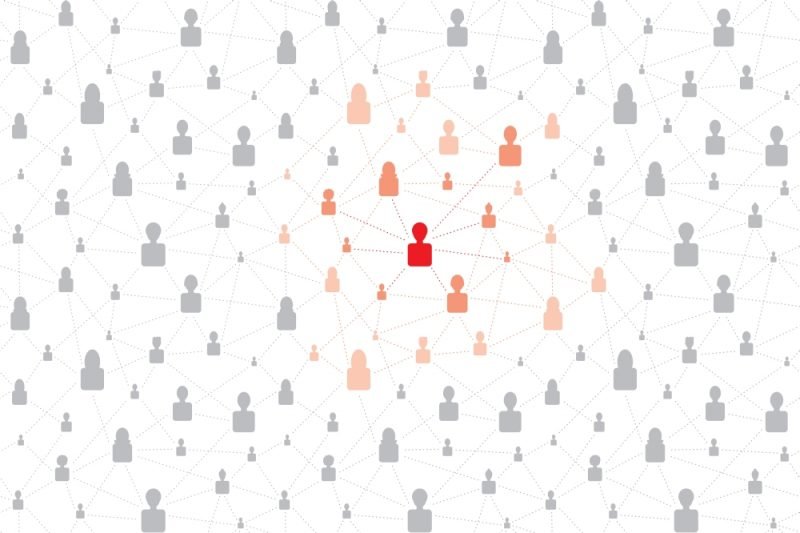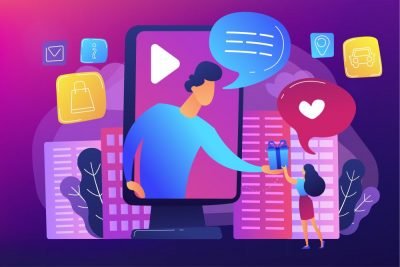From the offices of app startups to the boardrooms of multinational corporations, going “viral” has been a huge topic of discussion over the last several years. Viral traction is organic and quick-acting, and if taken advantage of, can put your product or service in front of millions of eyes in a matter of days or even hours. These days, every app entrepreneur wants to know how to make an app go viral. With traditional routes, app developers may take years just to establish an initial base of a few thousand users. Those who go viral, on the other hand, may be able to attract thousands of downloads within a matter of minutes.
From the outside, app virality seems like a stroke of luck – a cool app gets released at the right time and people love it so much that they want to tell all of their friends about it. It seems that the only difference between the overnight success of an app like Pokemon, and your new mobile app or game, is mere chance. However, this just simply isn’t the case. Apps go viral for the same reason that anything goes viral – and it’s more a matter of psychology and positioning than anything.
If you’ve ever wondered how to make an app go viral, you’re in luck; in this guide, we’re going to give you what you need to know to generate and maintain viral success for your mobile application.
How To Make An App Go Viral – The Psychology
Have you ever considered why some things go viral and why some things don’t? Consider this – a brand can spend thousands of dollars promoting a contest with the offer of a great reward and get no traction at all; while an individual can spend zero dollars pouring ice-cold water on themselves – spurring the #IceBucketChallenge and generating engagement from hundreds of thousands of people in a matter of days.
Social media especially has given brands the opportunity to interact and attract consumers instantly; but with so many brands vying for their attention – consumers are in complete control of what they choose to read, view, download, and share. Brands spend millions and millions of dollars creating content that consumers like, but ‘liking’ something doesn’t compel them to share it. What makes users share something? According to a study by The New York Times Customer Insight Group, there are five main reasons why people share things online :
- To bring valuable and entertaining content to others.
- To define ourselves to others.
- To grow and nourish our relationships.
- Self-fulfillment
- To get the word out about causes or brands.
In other words, sharing is both about providing value to one’s self and to others. In some cases, people share things that define who they are as a person or their stance on an issue; while in other cases they share things because they truly believe it will benefit someone else. Some people share things because they get some sort of fulfillment out of it – whether it’s some physical reward or some type of recognition. Sharing isn’t about liking something, it’s about believing that something has the power to achieve one of the five listed objectives.
Consider these stats from the same NYTimes Customer Insight Group study :
- 94% carefully consider how the information they share will be useful to the recipient.
- 85% stated that reading other people’s responses helps them understand and process information and events.
- 84% stated that they share because it allows them to support causes or issues that they care about.
- 78% responded that they share information online because it lets them stay connected to people they may not otherwise stay in touch with.
- 73% share information because it helps them connect with others who share their interests.
When you are able to truly understand why your customers share things, it is much easier to create campaigns that will meet their specific objectives. Viral app campaigns are built around the psychology of their target markets; users don’t just respond to and share campaigns simply because they exist.
3 Techniques To Make Your App Go Viral
There is no one size fits all strategy to making an app go viral, but by combining the right product with the right strategy to achieve a consumer’s “sharing objective”; you can create a successful app campaign that will significantly boost the visibility of your mobile app. In the following sections, we will examine five proven techniques for generating viral traction.
Gain Exposure from the Right Influencers
The simplest way to make your app go viral is to get the right people talking about it. In the days of social media, influencers are king. Influencers exist in every industry, and persuading a single influencer could make your app visible to thousands and thousands of potential users within your influencer’s network. A single tweet by the right person; a video of the right person saying how cool your app is; a post from the right person about how your app solved their challenge – influencer mentions give your app instant social proof and credibility and immediately position your app as “industry-accepted”.
Make sure you understand who your clients listen to on social media – who influences the market? If you were launching a Bitcoin strategy app, for instance, you would want to find leading cryptocurrency strategists that consumers turn to for trading advice. By having them mention your application as a part of their buying/selling process; their followers will immediately equate your app as a viable and credible solution. Some apps have more “mass” appeal than others and may have more potential for mass adoption, but even influencers in niche markets can drive considerable traffic to an industry-specific app.
Obviously, your app doesn’t go viral just by figuring out who the influencers are – you’ll need to contact them and convince them that your app is worthy of being mentioned. Real influencers get flooded with requests daily, so make sure your pitch stands out and that you offer them something of value. In our Bitcoin app example, the founder may invite the influencer as a limited beta user and offer them a lifetime upgrade to a paid subscription package. By doing so, they are provided value, shown that their opinion matters, and further encouraged to use the app. If your app actually provides a worthy solution, the influencer will most likely share the new app they “discovered” with their social following. Keep in mind – influencers want to influence, and their reputation is on the line; they’ll only share apps that are truly beneficial for their readers or viewers (remember: sharing objectives).
Create The Fear Factor
It is scientifically proven that people hate losing much more than they love winning. By nature, we are wired to want to be on the “inside” of everything that is great; and not looking in from the outside. Many viral apps and campaigns have used this psychological weakness to quickly boost downloads by building high anticipation through limited access or by creating fear of missing out (FOMO).
Here’s a personal story: I can remember the launch of Facebook like it was yesterday. I was a college student at the time. While visiting home, a friend of mine who attended another college showed me his “Facebook page”. After being a MySpace addict for the previous 18 months, I was eager to set up my Facebook page immediately – but, I couldn’t! Facebook rolled out access to the platform school by school and since they hadn’t released to my school yet, I couldn’t register an account with my college email address. When I returned to school that Monday, Facebook was the only thing people were talking about. Everywhere I turned someone would tell me, “Hey man, did you hear? We’re getting Facebook this week!” Everyone was so pumped! The anticipation was at a peak. What happened? The day Facebook opened its platform to our school, it seemed the entire school population registered immediately.
Facebook rolled out this strategy school by school across the country, building anticipation all along the way. Consumers want to be part of the club – and when they can’t… they want it even more! This is how anticipation works – if you make people aware of something that they can’t yet have, they begin to build it up in their mind as something that they MUST have.
There’s one thing that makes you want something more than having to wait – missing out. Take a travel booking website for example. When we look up a deal, we are presented with how many people have already bought the package and how many are left. For example, a search for a hotel booking in San Diego may state, “27 people have booked this room. There are 2 rooms available.” To the user this means – this deal is moving fast and if you wait, you’ll miss it. Beta stage is a perfect time to run a FOMO campaign. Let consumers know that your app will be available on a certain date, but only available to a certain number of users; if they don’t beat the clock, they’ll miss out!
A few years ago, Bitcoin instantly became all the rage. Every media source was covering and mentioning the explosive growth of Cryptocurrency and people began seeing Bitcoin as a pathway to undeniable success. Those who didn’t have any Bitcoin instantly began buying in because they didn’t want to be left out when all of their friends got rich. Within a matter of a few days, the price of Bitcoin had doubled as hundreds of thousands of new investors began trading their cash for Bitcoin. The rapid growth of Bitcoin during this time was driven by two main factors – the anticipation of getting rich and the fear of missing out on the chance to be rich.
Bait, Hook and Download
According to Nir Eyal’s guide, “How To Build Habit-Forming Products”, any app can go viral if it meets specific requirements and has the ability to “hook” users. This technique focuses on the psychology of what people want, and what helps them progress through the purchase stage. The hook model is based upon four steps – Trigger, Action, Reward, and Investment:
- Trigger– Users need a trigger to enter the buying cycle. Internal triggers are what people hope to get out of your app – whether it be socialization (social media), a solution for boredom (mobile games) or to solve a challenge or issue (business apps). External triggers refer to information or stimuli that comes from outside sources such as ads, ratings/reviews, blog mentions, etc. Internal and external triggers work together to persuade consumers to download and use apps. Someone who has been single for years will immediately peak in curiousity when they read an article about a new dating app. The article (external trigger) responds to their desire to date (internal trigger).
- Action – A consumer who is triggered properly will be compelled to take your intended action (such as downloading your app). To take an action, people must be motivated and have the ability to do so. Someone who is compelled to download your app but can’t find it in the App Store will be unable to complete your intended action. Make it simple for users to follow through on your trigger, otherwise they may give up during the act of trying.
- Reward – Once a user has completed the action, they should be rewarded with the result that they expected. Signing into a great mobile game immediately curbs your boredom, while registering to Facebook allows you to immediately begin finding your friends and socializing.
- Investment – When the user finds that they are rewarded by signing into your app and that they are able to achieve whatever objective they were hoping to achieve – they make an investment by making purchases, revisiting the app again, sharing it on their social media pages and telling their peers about it.
By successfully hooking consumers and providing them with a viable solution to their challenge, they will be compelled to tell others about your app – giving you the viral push that you desire.
Does Going Viral Mean Instant Success?
It seems that “going viral” is the equivalent of success – if only a million people could see your product, you’d be set forever… right? Unfortunately, this isn’t the case. For many apps, going viral can be a nightmare. Becoming a “fad” in the app world means that you only remain relevant until the next “fad” comes around. The weight of going viral will crack the seams of any app startup that hasn’t established a strong foundation.
Take Peach for instance. Essentially, this app was a combination of Twitter and Slack and allowed users to post status, gifs, and “magic words” – keywords that allow you to post what you’re doing and instantly compile gifs related to those words. Peach quickly went viral as word about the app rocketed through the market; but just as quickly as it hit the Top 10 in the App Store, it faded away, never to be heard from again. The initial fun of “magic words” was enough to draw uses in, but not enough to retain them. Without a strong core, users didn’t find this single feature valuable enough to want to use the app over and over again.
Before Instagram introduced videos, there was Vine. This short video/social media platform quickly rose to meteoric heights early on. For a short period, Vine was considered the quickest growing video-sharing application in the world. One of Vine’s largest marketing advantages was the adoption by social influencers, whose fans followed them over to the app. While Vine had a clear unique selling proposition with their short videos, it was one that was easily duplicable by other platforms.
Soon after larger platforms began offering short video capabilities, influencers began leaving Vine for other platforms that now offered short-video capabilities in addition to the several other popular features that users desired. Going viral is only valuable if you’re able to capture the traffic and maintain the growth after the initial craze has worn off. Most viral traffic subsides after 48 hours and if there isn’t a plan in place, you’ll look up a week later and it will be like going viral never even happened. Consider the following suggestions for maintaining growth after going viral:
- Push Notifications can be a great way to reignite your audience’s attention once the hype dies down. Some people may simply forget about your app after using it once or twice – push notifications can remind them of your app and encourage them to give it another try. The potential for these notifications are intensified when you add in a great offer such as, “Play now and receive 500 free credits!”
- App Store Optimization (ASO) helps to ensure that your app has high visibility in the App Store. If your product is difficult to find, users may give up trying before they actually locate it. Optimizing for different platforms (iOS vs Android) can be difficult. It is recommended that you consult with a professional ASO expert to help you better your positioning within the App Store.
- User Reviews are one of the most advantageous benefits of going viral – if people actually liked your app. Reviews play a huge part in user psyche as they decide which apps are worth their time, and which apps aren’t. An app that is able to gain thousands of positive reviews quickly will be able to leverage those reviews in the future when potential users come across their app in the App Store.
Winning The Viral Game
The quicker you ascend the viral ladder, the more dangerous the fall will become. For app startups, success is about developing a strong foundation with brick-by-brick growth. However, if you can combine human psychology insights, technology, and a long-term strategy – real tangible app success could be in your short-term future.
Ultimately, app success is about building awesome technology and implementing great business models. We’ve helped dozens of businesses bring their app ideas to life – not just through development, but by following a true app startup process. If you’d like to learn more about how to best position your app startup for viral success, contact us today for a free consultation!









